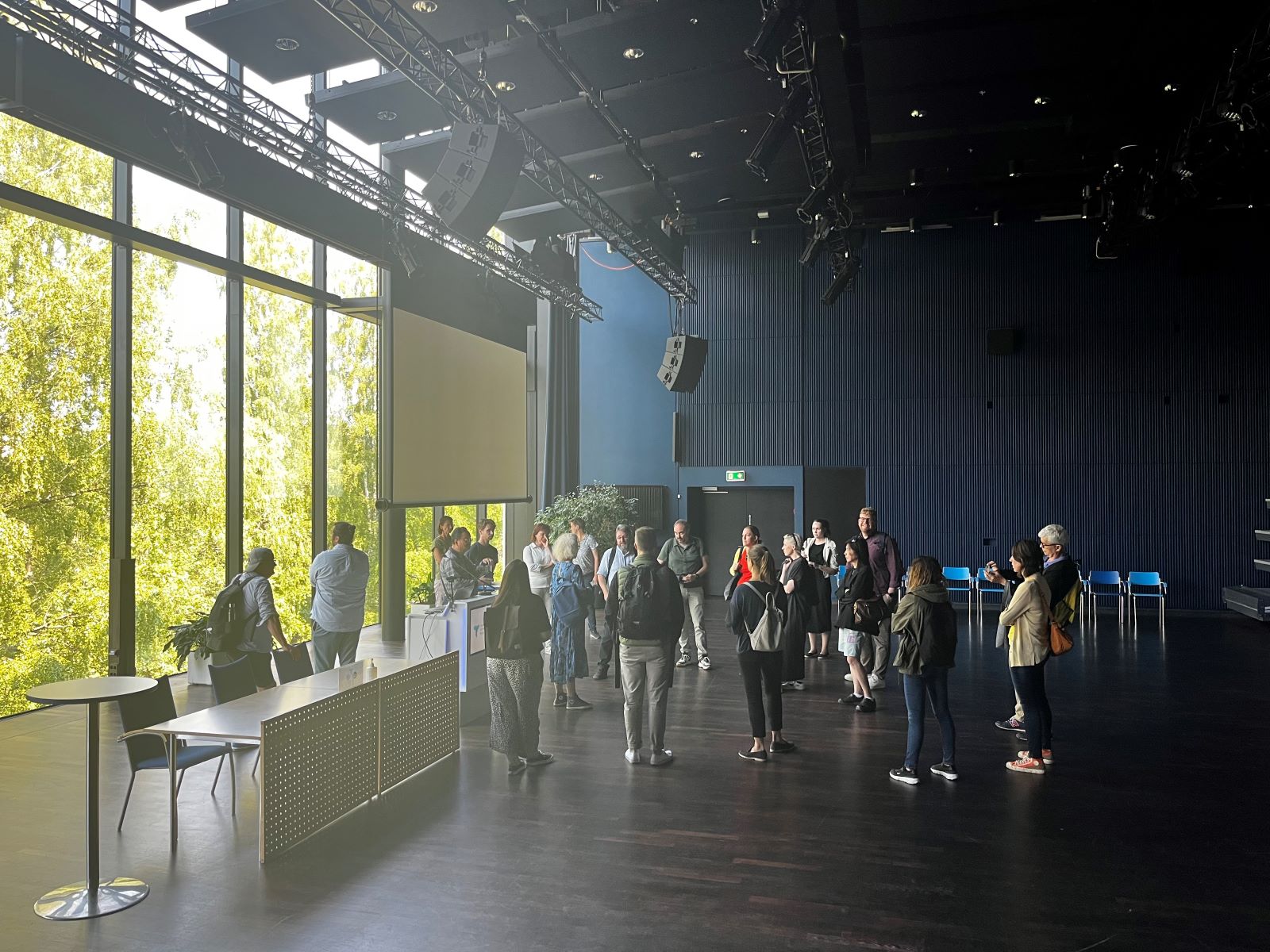The International Districts of Creativity Network Explores Tampere's Experience Economy
The Districts of Creativity network serves as a platform for creative cities and regions worldwide. Each year, the network selects a city where its members can explore the local creative destinations. From June 13th to 15th, the network visited Tampere, where they had the chance to explore facilities and activities at Mediapolis, Nokia Arena, Hiedanranta, and Tampere Hall.
–The network serves as a collection of perspectives and ideas, fostering international collaboration, explains Maiju Viiki, Project Manager of the Experience Economy Development Program.
–Last summer, in Barcelona, we had the opportunity to learn about Igualada's leather industry, which serves as a resource for high-quality furniture, fashion, and automotive companies. In Tampere, the event industry and audiovisual sector have garnered international interest. Despite being a compact-sized city, we host major events and produce international films. Naturally, this appeals to visitors, Viiki adds.
The City's Strategic Support for the Event Industry Captures the Network's Interest
Pascal Cools, CEO of Flanders DC and Chairman of the Districts of Creativity network, highlights Tampere's focus on walkability and short distances between event venues, public transportation, and hotels.
–Here, you can see that the city has been designed to support large-scale events. The impressive ten-minute walking distance between different locations is remarkable. While the city may not be very large on a global scale, it is perfectly sized for organizing events, and it offers facilities also for major events. The city's urban planning efforts are evident in the background. Everything works, Cools states.
Cools is also intrigued by the diversity of event venues in the city.
–We had the opportunity to visit Nokia Arena and Hiedanranta, for instance. Both venues host events, but they exude completely different, almost contrasting atmospheres, Cools ponders.

Tampere's Audiovisual Cash Rebate Attracts Film Productions from Afar
Fanny Heinonen, the Business Advisor of Film Tampere, introduced the network to Tampere's internationally significant audiovisual cash rebate, which attracts film productions from distant locations as well.
–The regional cash rebate in the Tampere region is 10-15 percent, compared to Finland's 25 percent of production costs, this makes Tampere an internationally attractive production destination. In addition to the cash rebate, the area offers both urban and lake scenery, countryside settings, studios, as well as the infrastructure and expertise required for executing productions at an international level, Heinonen lists.
The visitors also had the opportunity to explore Mediapolis studios, the range of educational programs available, and the offerings of Yle, the Finnish Broadcasting Company. Furthermore, Ilkka Rahkonen, the CEO of Ilkka's Creative Studios (ICS), shared insights into business models for intellectual property rights.
–It was fascinating to familiarize ourselves with Mediapolis and the city's infrastructure, and witness the investment in audiovisual education. In Barcelona, we have similar educational institutions and a desire to invest in the industry. However, what has made the biggest impression on me is the atmosphere of Tampere. It conveys a sense of balance between work and leisure, which is valuable, reflects Alex Gines, Innovation Technician at Neàpolis.

Perttu Pesä, the Event Director of the City of Tampere, engaged in discussions with the network about the significance of major events for the regional economy and the social and branding impacts on the city.
–A significant portion of the revenue in the Tampere region comes from various services, ranging from hotels to restaurants. For instance, the Ice Hockey World Championships brought over 60 million euros to the Tampere area. This accounts for eight percent of the annual turnover generated by events in the city, Pesä illustrates.
–It's great to see how decision-makers, entrepreneurs, and citizens have come together and considered how to build a city that supports events, Cools remarks.

Kati Kuusisto, current CEO of Kuusisto & Sahlstedt Oy and former Advocacy Director of the Finnish event industry association, presented the organization to the network. According to Kuusisto, collaboration and a shared vision are essential for the event industry.
–If the event industry wants to be a visible player, we need to collaborate across the entire sector. We can't compete internally between different types of events, such as cultural and sports events. Instead, we need to see the bigger picture and strive to achieve the same significance that industries like forestry or technology have been able to establish in societal discussions. The societal impact of the event industry is significant, but if each event sector conveys its message individually, the societal effect remains fragmented and limited, Kuusisto states.
Kuusisto also has a hope for international network activities:
–Take the idea of collaboration as a souvenir and let's work together on a larger scales, Kuusisto encourages.
Cools agrees with Kuusisto's perspective.
–In addition to sharing ideas, the strength of the Districts of Creativity lies in the network itself. Creative industries require international collaboration. I know who to call if I need contacts or insights, for example, from Spain, the Netherlands, or Finland, Cools summarizes.

